Finding the Perfect Fit for Your Engagement Ring
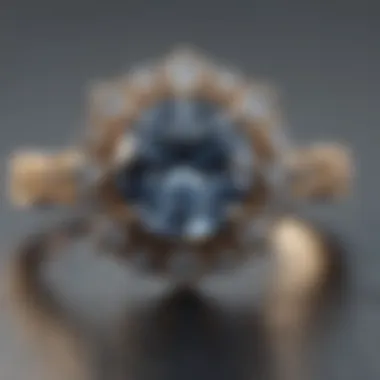
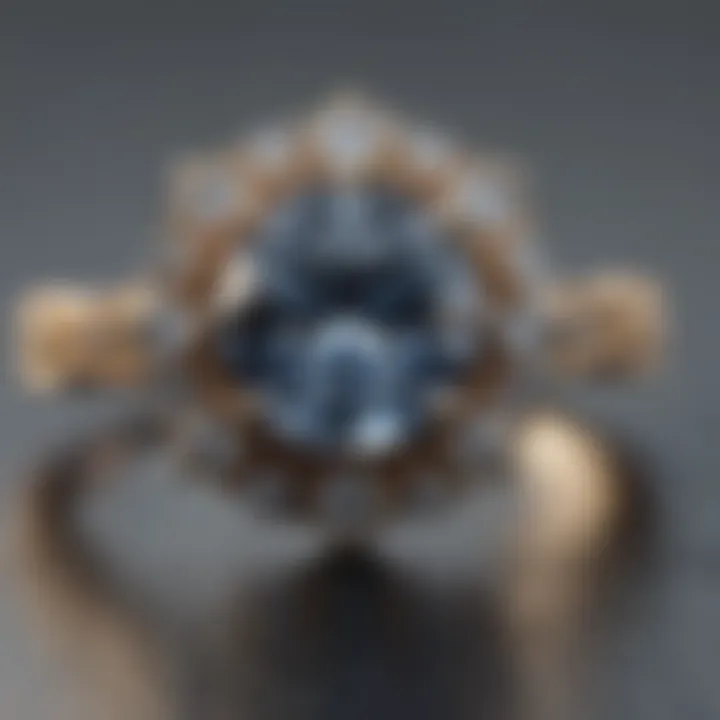
Intro
When it comes to selecting an engagement ring, the focus often falls on the dazzling sparkle of the gemstone nestled in precious metal. Yet, this allure can sometimes overshadow the essential factor of fit. Understanding how an engagement ring should fit is integral to ensuring comfort, style, and practicality. This article sets out to decode the science and art behind ring sizing, examining how finger shape and size, along with individual lifestyle, influence this personal choice.
The ideal fit is not only about how the ring looks; it’s also about how it feels on the finger as you navigate through your daily activities. After all, a ring that is too tight or too loose might end up causing discomfort or, worse, being lost. So, before diving into the exciting world of gemstones and styles, let’s focus on the foundational aspect of finding your perfect match.
Gemstone Overview
Definition of Gemstones
Gemstones, often celebrated for their beauty, are naturally occurring minerals or organic materials that are cut and polished to be used in jewelry. They can take many forms, from vibrant sapphires and deep emeralds to shimmering diamonds and even more rare offerings like alexandrite. Their unique colors and structural properties make them highly desired and valuable across cultures.
Classification of Gemstones
Gemstones are typically classified into two main categories: precious and semi-precious.
- Precious Stones: This coveted group includes diamonds, rubies, sapphires, and emeralds. Often associated with luxury, they are defined not just by their visual appeal but also by their rarity and durability.
- Semi-Precious Stones: While they might not carry the same cachet as precious stones, semi-precious stones like amethyst, turquoise, and garnet are still cherished for their distinct colors and properties. Their diverse range allows for personal expression without breaking the bank.
The Various Aspects of Gemstones
When considering gemstones for an engagement ring, it’s essential to take various aspects into account, such as:
- Color: Different gemstones exhibit colors influenced by the elements present during their formation.
- Clarity: This refers to the absence of inclusions or blemishes in the gem.
- Cut: The way a gemstone is crafted can significantly affect its sparkle and visual appeal.
"A ring is not merely a piece of jewelry; it is a reflection of love and a testament to commitment."
As we journey deeper into understanding how to achieve the perfect fit for an engagement ring, we’ll explore nuances that also incorporate personal taste and seasonal variations. This blend of art and science is what makes selecting an engagement ring both a joyous occasion and a thoughtful process.
The Importance of a Proper Fit
When it comes to engagement rings, achieving the right fit is paramount. A proper fit not only enhances the wearer’s comfort but also ensures the long-term integrity of the ring itself. Think about it: this piece is meant to symbolize love and commitment, and it should be enjoyed daily without causing headaches or discomfort. Oftentimes, overlooked, the significance of a suitable fit can’t be understated.
A well-fitted ring sits snugly on the finger without being too tight or loose. This balance is crucial, as an ill-fitting ring can lead to a plethora of discomforts and issues that may detract from the reason it was chosen in the first place. Understanding the nuances of ring fitting guides one in making informed decisions that cater to both aesthetic preferences and lifestyle considerations.
Comfort and Wearability
Comfort is king when it comes to selecting an engagement ring. A ring that fits correctly allows for ease of movement, which is essential for everyday tasks. Imagine going through your day with a ring that constantly shifts or, worse yet, feels constricting. Over time, this can create a mental distraction as much as a physical one. A comfortable ring will not leave its mark or require regular adjustment, thus allowing the wearer to enjoy their symbol of love in peace.
Avoiding Common Issues
Several issues can crop up when wearing an engagement ring that’s less than perfectly fitted. These concerns might seem trivial at first glance, yet they can lead to larger complications down the line.
Ring loss
Losing a ring is a heart-wrenching experience, and a proper fit is your first line of defense against such a calamity. A loose ring can easily slip off without you knowing it. Different environments, whether it be warm weather or vigorous activities, can change your finger size temporarily, increasing the risk of loss. It’s not just about aesthetics; ensuring a snug fit can help to avoid the gut-wrenching panic that comes with wondering where your treasured piece may have gone.
Skin irritation
Skin irritation is an often underestimated concern that can stem from wearing a ring that doesn’t fit quite right. Too much friction from a constantly shifting band can lead to rashes or abrasions. If the ring is too tight, it can cause excessive sweating, which may result in a host of other skin irritations. By focusing on a proper fit, you can sidestep these uncomfortable experiences. Your engagement ring should feel like a natural extension of yourself, not a source of annoyance.
Frequent resizing
Resizing a ring is sometimes inevitable, but frequent resizing is less than ideal. Each resizing can weaken the structural integrity of the ring. While the occasional adjustment may be necessary due to weight fluctuations or changes in lifestyle, a proper initial fit mitigates the need for constant alterations. This is especially relevant for intricate settings where the stability of stones is key. Regular resizing can lead to potential complications, including damage to both the band and the stones themselves. A custom fit from the start not only preserves the aesthetics but also the durability of your cherished engagement ring.
Understanding Your Ring Size
Determining the right ring size is foundational in ensuring the engagement ring is not only beautiful but also comfortable and functional. A well-fitted ring enhances the overall experience, allowing the wearer to appreciate its beauty without constantly adjusting it or worrying about losing it. Several factors contribute to finding that perfect ring size, and understanding each can help avoid common pitfalls.
Factors Influencing Size
Time of day
The time of day plays an unseen yet significant role in how our fingers swell or contract. Many people find their fingers are slimmer in the morning and more swollen by the evening. This fluctuation can vary greatly even between individuals. Because of this, measuring during the afternoon or early evening might give a more accurate reflection of one’s typical size. Thus, if you aim for a fit that will be comfortable throughout the day, measuring at these times tends to be a sound choice. The upside of this approach is that it aligns the size with the most active part of the day; however, it could lead to overestimating your size if done in the earlier hours.
Body temperature


Another crucial aspect is body temperature. A rise in temperature can lead to swelling, which means if you’re trying on rings on a warm day or after exercising, you might find they feel snugger than usual. Conversely, on colder days, fingers can shrink, leading to a looser fit. Recognizing this factor encourages careful consideration of when to measure, ideally during moderate temperature conditions. This adds a layer of nuance when selecting a size, promoting a fit that adapts well to varying climates.
Hydration level
Lastly, hydration level can also sway finger size. Dehydration can have the effect of making fingers appear slimmer, while adequate hydration tends to result in a fuller size. This is often overlooked but can have a palpable impact. Ensuring you're hydrated when you measure can provide a truer representation of your everyday size. The uniqueness of this factor lies in how quick adjustments can be made; simply drinking water before measuring can lead to different sizing results.
Measuring Your Finger
Properly measuring your finger serves as the bridge between understanding size and achieving the perfect fit. Several methods exist to ascertain this crucial dimension, each with its own pros and cons.
Using a ring sizer
Using a ring sizer is one of the most reliable methods for gauging your size. These tools often come in the form of a set of rings or a straightforward sizing strip. The primary advantage of a ring sizer is its accuracy; it aligns closely with standardized measurements and helps eliminate the guesswork that comes with other methods. It is a practical choice for those who desire quick results since they can be easily acquired from jewelry stores or online. However, one possible drawback is that not everyone has immediate access to a comprehensive set, which could cause some inconvenience in measurements.
String or paper method
Another alternative is the string or paper method, which is accessible and requires no special tools. Simply wrapping a piece of string or strip of paper around your finger and marking the point of overlap will give you a rough measurement. This method promotes creativity, as it can easily be done at home with whatever materials are available; however, it does come with a downside: it can easily be less precise than other methods. It requires care when measuring or marking to ensure accuracy, which can lead to significant discrepancies.
Professional measurement
For the most precision, professional measurement is often the way to go. Jewelers have specific tools and techniques that provide accurate sizing, taking into account unique aspects of finger anatomy. This route can offer peace of mind, knowing that experts are making the adjustments based on experience and expertise. However, the potential downsides include the time required to go to a store and possible hesitancy if you're still deciding on ring styles.
"Getting the right size might just be half the battle, but it’s a battle worth winning; it’s about ensuring that ring does more than just look good—it needs to feel good too."
Ring Styles and Their Fit
When embarking on the journey to select an engagement ring, understanding the different styles and how they fit can drastically impact your choice. The style of the ring is not just a matter of aesthetics; it also influences comfort, how it’s worn daily, and even its longevity. The way a ring conforms to your finger, along with its overall design, can make all the difference between an exquisite piece of jewelry and one that feels cumbersome.
As such, it’s essential to consider how the chosen style aligns with both personal preferences and practical wearability. This section delves into two common styles of engagement rings: solitaire and multi-stone settings. Following this, we will explore the considerations surrounding band widths—including the attributes of narrow and wide bands—and how cultural preferences shape these choices.
Solitaire vs. Multi-Stone
The solitaire engagement ring is often viewed as the classic choice. Its design features a single center stone, often a diamond, which captures and reflects light beautifully. This simplicity allows the ring to highlight a high-quality gemstone without distractions, making it a staple option for many couples.
However, a multi-stone ring carries its own allure. It can tell a unique story through a combination of stones, whether it’s dazzling diamonds or colorful sapphires and rubies. The configuration of multiple stones adds complexity and character, tailored to express an individual’s style.
The choice between these two styles often boils down to personal preference. A solitaire may symbolize a traditional approach, while a multi-stone setting might figure prominently in one’s narrative of love.
Band Width Considerations
Narrow bands
Narrow bands are known for their understated elegance. Standing at around 1.5 - 2mm, these dainty settings offer a delicate touch to the overall aesthetic of the ring. They do make a finger look slimmer and can beautifully accentuate the stone's brilliance. Moreover, their lightweight nature adds to everyday comfort, allowing the wearer to forget they are even adorned.
Yet, the narrow band does have its drawbacks. Since they provide less surface area, they may become less stable over time as the metal experiences wear and tear, leading to potential issues. Thus, those opting for this style should consider both their lifestyle and the durability of such designs.
Wide bands
On the flip side, wide bands, typically measuring over 4mm, present a more substantial look. They can offer a sense of balance, especially when paired with larger stones. The heft of a wide band provides confidence in wear and can carry intricate details or settings that draw attention.
However, they can be less forgiving if sizing isn't perfect. The additional material can trap heat around the finger, which might lead to discomfort, particularly in warmer weather. Players in the game of style and fit must keep in mind the trade-offs inherent in the width of the band.
Cultural preferences
Cultural norms and traditions can uniquely shape what an engagement ring signifies and how it is worn. For some cultures, broader and more intricate bands may symbolize prosperity or family lineage, while others might favor the minimalistic approach of narrow bands for their simplicity.
Understanding these cultural dynamics can help narrow down choices and ensure that what’s worn on the finger resonates on a deeper level—whether it’s showcasing heritage or personal style. Additionally, cultural variations can influence design features that might be essential for some buyers; preferences may range from specific engravings to stone choices that reflect cultural significance.
In summary, the fit of your engagement ring isn’t solely a matter of size but also involves deliberation over style, band width, and cultural resonance. By considering these elements, one can navigate the myriad of choices to arrive at a ring that is not only visually appealing but also profoundly meaningful.
Seasonal Adjustments to Fit
Considering the fluctuating nature of our bodies, it’s essential to account for seasonal adjustments when determining the best fit for an engagement ring. Understanding how temperature and climate impact finger size can save you from unnecessary discomfort and ensure your ring remains both a beautiful and practical piece for everyday wear.
Understanding Seasonal Changes
Swelling during heat
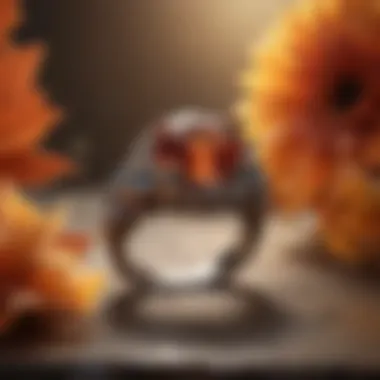
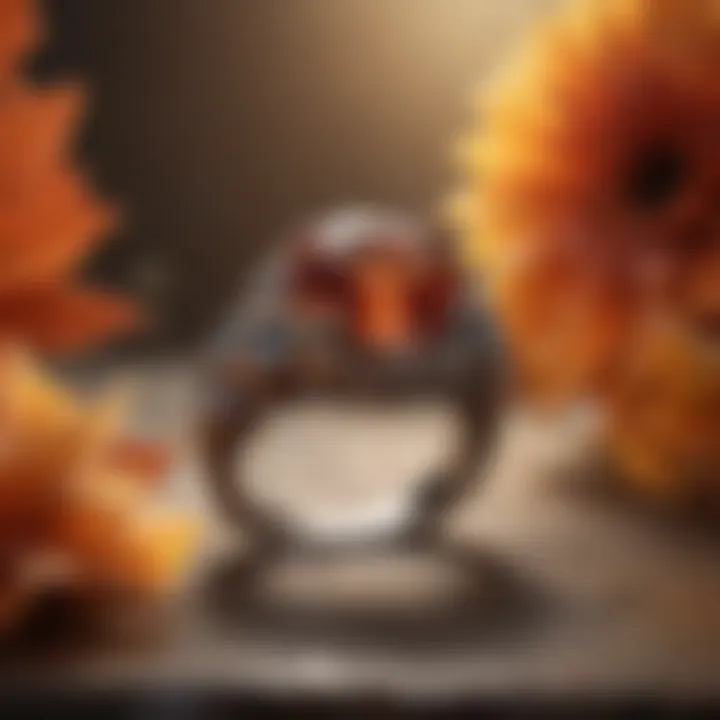
When summer rolls in with its blistering heat, many individuals notice their fingers expanding. This phenomenon, often caused by increased blood flow and heat retention, can lead to an unexpected snugness of your beloved engagement ring. Personally, encountering this issue can feel a bit like wearing a vice—definitely not ideal when you’re trying to enjoy a sunny day or a romantic dinner date.
The key to this aspect is awareness. Heat causes blood vessels to dilate, resulting in temporary swelling, which could potentially necessitate resizing your ring. Individuals should consider rings that sit comfortably while still providing elegance and security. Selecting a slightly looser fit or even considering a comfort-fit band can enhance wearability during those warmer months.
Cold weather considerations
As winter descends, the flip side of the temperature spectrum comes into play. Cold weather can constrict the blood vessels, resulting in thinner fingers. This can render a ring that perfectly fit like a glove during the summer to become a tad loose when the mercury dips. It may create worries of losing your piece, especially when out and about in icy weather.
Additionally, if your engagement ring is designed with intricate settings, the last thing you want is for it to slide off unnoticed in a snowy landscape. Therefore, one effective tactic is to have a ring that is not overly snug—this allows for some seasonal shift without endangering your treasured jewelry.
Adjusting Your Fit
Adjusting to these seasonal changes can involve practical solutions that ensure your ring remains fitting throughout the year. Let's explore a couple of methods that might just save the day.
Removables
Removable features, such as detachable bands or even entire rings, can be a game-changer. If you’re unsure about the fit changes throughout different seasons, having the option to simply remove the ring during extreme heat or cold can relieve stress related to wearability. These pieces are not only innovative but can also offer versatility for occasions.
Most appealingly, removable attachments allow you to have a customized look whenever you wish—whether you prefer to wear just the engagement ring or want to add a more personalized touch with additional bands. However, this does require a bit of discipline to ensure nothing gets misplaced during adjustments.
Spacer rings
Spacer rings offer another ingenious method to adapt to seasonal changes. A spacer ring fits snugly between your engagement ring and your finger. This subtle addition can help tighten a loose fit, especially during those winter months when your fingers are at their skinnier best. Plus, they come in various designs adding an extra flair to your ring set.
While spacer rings can effectively manage size discrepancies, one should be cautious. They can sometimes feel bulky or less comfortable if worn for long periods. On the other hand, if designed thoughtfully, they can merge well with your overall ring aesthetic—allowing you to showcase your personalized style while addressing fit concerns.
In summary, considering seasonal adjustments when selecting your engagement ring ensures comfort and security year-round. From sweltering summer days to chilly winter nights, being aware of your body’s changes will enhance your wearing experience, hence making that ring a symbol of love without hitches.
Adjustments and Resizing Options
When it comes to engagement rings, the right fit isn’t just a matter of aesthetics; it can affect overall comfort and long-term wearability. Adjustments and resizing options are crucial aspects that often go overlooked. They offer the chance to modify the ring so it can harmonize more closely with how you live your everyday life. This section delves into essential insights about when to consider resizing and the techniques available. It’s all about ensuring that beautiful ring fits like a glove.
When to Resize
Identifying a bad fit
Identifying a bad fit goes beyond simply looking at the way the ring sits on your finger. It encompasses a range of indicators, from how easily it can slide on or off to whether it leaves a noticeable mark on your skin. A ring that twists around too much can certainly be a nuisance, and can even lead to it slipping off unnoticed. Alternatively, a ring that’s too tight won’t just feel uncomfortable; over time, it can restrict circulation. Understanding what constitutes a bad fit helps in selecting the right adjustments quickly.
A key characteristic to keep in mind is the balance between snugness and comfort. A well-fitting ring should feel secure yet not constricting. Many people often underestimate the importance of this balance, seeing the engagement ring primarily as a decorative piece rather than something that should enhance daily life. This perspective makes identifying a bad fit not just a matter of personal comfort, but also a necessity for practicality in wear.
One unique feature of identifying a bad fit is recognizing the patterns in finger size changes that can occur over time. Fluctuations can happen due to weight changes, hormonal shifts, or even temperature impacts.
Expert consultation
Expert consultation, as the name suggests, brings in a wealth of knowledge from individuals skilled in jewelry fitting and repairs. Consulting an expert prevents missteps and ensures the right adjustments or resizing techniques are employed. They can pinpoint subtle signs that an adjustment is needed, which might be missed by the untrained eye. Their expertise can help you determine not only the current fit but also help forecast future size changes as circumstances evolve.
The key characteristic of expert consultation is tailored advice. Unlike a one-size-fits-all solution, experts offer personalized assessments considering individual circumstances. This approach not only enhances the effectiveness of any adjustments but also assures the long-term viability of the ring.
However, one must also consider the potential downside: this service typically comes at a financial cost. The dependability of professional knowledge can outweigh the price tag, but it is essential to ask questions and ensure that the expert’s reputation aligns with your expectations.
Resizing Techniques
Resizing techniques can vary greatly, and understanding your options can make a world of difference when it comes to comfort and long-term wearability of your engagement ring. Two common methods, stretching and reducing, are widely regarded for their effectiveness.
Stretching
Stretching is a technique applied when a ring needs to be made larger. It involves the application of heat to safely expand the metal slightly, increasing the finger size it comfortably fits.
One of the main advantages of stretching is its quick turnaround and minimal impact on the ring's design. It allows a slight adjustment while keeping the integrity of the engagement ring intact. This technique caters effectively to those who need a fast fix, unlike more complex resizing options that might take more time.
However, this technique is not without its limitations. A person with larger knuckles may find it still uncomfortable even after stretching. Therefore, understanding personal finger anatomy can be vital before opting for this resizing method.
Reducing
Reducing is the opposite approach, wherein the ring is remodelled to make it smaller. This often involves cutting the band, resizing, and soldering it back together. While it’s more labor-intensive than stretching, it offers a tailored fit that accommodates those whose fingers may have shrunk.
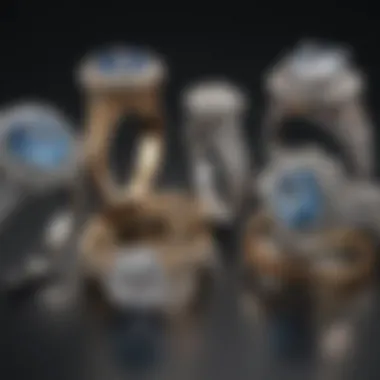
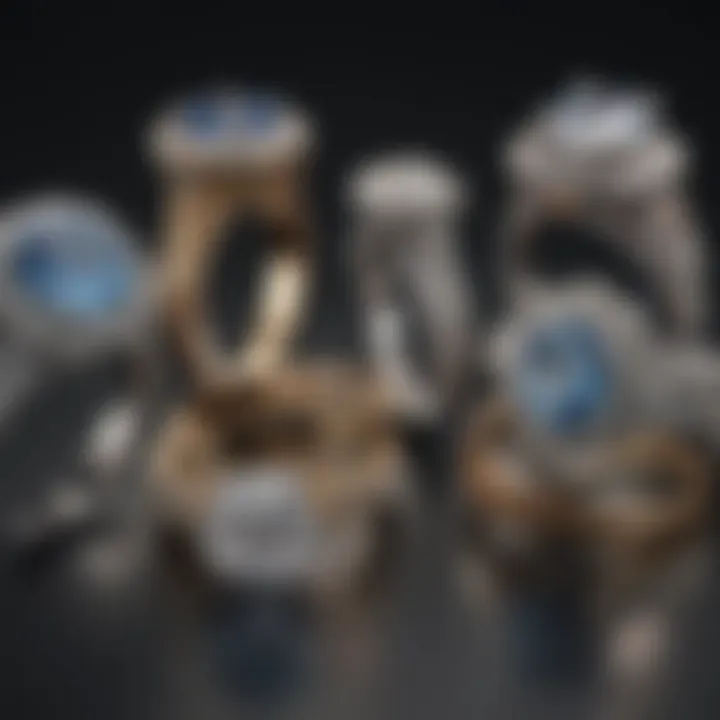
The primary advantage of reducing is that it can lead to a more precise fit, especially for problematic rings that need significant adjustment. Conversely, it may leave a subtle mark where the cut and join were made, reminding the wearer of the ring’s journey.
But a downside to reducing is that overzealous resizing can lead to a situation where another resizing becomes necessary. With this in mind, it’s wise to keep an open line of dialogue with the jeweler about the best methods based on your specific needs.
Caring for Your Engagement Ring
Caring for your engagement ring is not simply about keeping it clean; it’s about ensuring that the symbolic piece of jewelry remains beautiful, secure, and ready for every occasion. An engagement ring often carries significant emotional value, representing a promise between couples. Thus, taking the time to maintain it is crucial for preserving both its physical integrity and its sentimental worth.
Cleaning and Maintenance
Regular cleaning of your engagement ring helps sustain its sparkle and clarity. Over time, daily wear can accumulate dirt and oils from your skin, which can dull the brilliance of even the most exquisite stones. To ensure your engagement ring remains as stunning as the day you proposed, consider these simple maintenance tips:
- Gentle Cleaning Solution: Use warm, soapy water with a mild dish soap. Soak your ring for about 20-30 minutes, then gently scrub it with a soft-bristled toothbrush, focusing on the areas around the stone.
- Avoid Harsh Chemicals: Stay away from bleaches or strong chemical solution, as they can harm the metal and damage the stone.
- Professional Cleanings: Schedule regular check-ups with a jeweler who specializes in engagement rings. They will not only clean the ring but also check for any damage or loose stones that could pose a risk.
In addition, you might also want to consider how you’re wearing your ring day-to-day. Heavy lifting or exposure to chemicals through cleaning products can jeopardize the integrity of your ring.
Protecting Your Investment
Engagement rings can be major investments, both financially and emotionally. Protecting that investment becomes paramount, and there are two key areas to focus on: insurance and safe storage practices.
Insurance considerations
Getting insurance for your engagement ring is a smart move. Think of it as an essential safety net that can save you from significant heartbreak and distress should something unfortunate occur. Key characteristics of ring insurance include:
- Coverage Types: There are generally two options – either an added rider to a homeowners or renters insurance policy or a specialized jewelry insurance policy.
- Professional Appraisal: Most insurance policies will require a professional appraisal to accurately assess the value of the ring, which also helps to understand its worth for any claim.
The unique feature of insuring your engagement ring is the peace of mind it affords you. If anything goes awry—be it theft, loss, or damage—having insurance allows for a smooth claims process that can lead to a replacement or restoration of the ring, thus preserving its value.
Safe storage practices
When it comes to safe storage, a little effort goes a long way in safeguarding your engagement ring. Storing it properly prevents scratches and potential loss.
- Jewelry Box or Pouch: Use a designated soft pouch or a jewelry box for storing your ring when you're not wearing it. Key characteristics of safe storage include:
- Protection from Damage: Keeping your ring apart from other jewelry helps avoid scratches and keeps it safe from entanglement.
- Humidity Control: A cool, dry place is best. Avoid bathrooms or areas prone to humidity, as this can compromise the metal over time.
The unique aspect of proper storage is that it requires minimal effort yet pays off immensely. A moment of diligence ensures that your treasured ring remains secure and in pristine condition, ready for those special moments.
Protecting your engagement ring is about respecting its value – both monetary and emotional.
In summary, caring for your engagement ring involves both regular cleaning and ensuring it’s appropriately protected when not being worn. Insurance and safe storage practices are critical elements that not only preserve the ring's physical allure but also safeguard the promise it represents for years to come.
Making a Statement with Your Ring
When you choose an engagement ring, it's not just about the jewel itself; it's also about the statement that it makes about you or your partner. A well-chosen ring embodies personality and style, establishing a narrative about love, commitment, and, sometimes, individuality. The significance of making a statement with your ring stretches beyond glitter and shine. It intertwines with personal expression, cultural nuances, and even emotional resonance.
Personal Style and Expression
Choosing the right stone
The choice of stone in an engagement ring plays a pivotal role in both aesthetic appeal and personal significance. Diamonds might be the traditional choice, shining brightly with their hardiness and brilliance, but alternative stones like sapphires or rubies can bring vibrancy and uniqueness. Each type of stone has its own character. For instance, sapphires are known for their deep blue hue, often symbolizing fidelity and wisdom. The visual context of the stone’s color and clarity often communicates more than mere attraction; it can convey deep meanings appreciated by discerning partners.
However, the appeal of various stones doesn't just lie in their beauty. Durability is an important aspect, particularly for an everyday wear piece. While a diamond can withstand the test of time, softer stones like opals may scratch more easily and require more care and consideration. Therefore, understanding the balance between beauty and longevity is crucial when picking the right stone for that special ring.
Setting styles
Equally important as the stone itself is the style of the setting, influencing the overall flair of the ring. For some, a classic solitaire setting harkens back to romance and tradition, emphasizing the brilliance of a single stone. Others may opt for intricate halo settings that add additional sparkle and flair, often signifying a more contemporary approach to jewelry.
The unique characteristic here is how different settings can enhance or overshadow the main stone. For example, a bezel setting can offer a modern aesthetic while protecting the stone, making it an excellent choice for an active lifestyle. On the flip side, more ornate settings can catch light beautifully but might not be suitable for every setting. That gives rise to a personal choice that intertwines aesthetic preferences with lifestyle needs.
Cultural Significance
Tradition variations
Cultural contexts bring an entirely new layer to the conversation regarding engagement rings. Around the globe, traditions vary widely, affecting how people view and choose their rings. In some cultures, the ring is seen more as a practical symbol of commitment rather than a flashy piece of jewelry. For example, in many South Asian customs, gold rings are favored, signifying wealth and prosperity. These choices often represent not just personal but familial values, and each stone's cultural connotation can influence the decision.
A unique feature of this diversity is how these cultural traditions can often clash with modern trends, leading to hybrid styles. Thus, navigating what is personally meaningful while respecting cultural traditions can create a deeper bond.
Modern adaptations
In today’s fast-paced world, the concept of engagement rings is also rapidly transforming. Modern adaptations have introduced fresh styles and materials, such as lab-grown diamonds or ethically sourced stones. These choices offer couples an opportunity to express their values—like sustainability and ethical consumption—through their rings.
The waves of these adaptations not only cater to contemporary consumers’ ethics but also play a crucial role in setting the stage for new traditions. While some may lean towards contemporary styles, others remain anchored in tradition, creating a rich tapestry of choices that cater to evolving sentiments.



